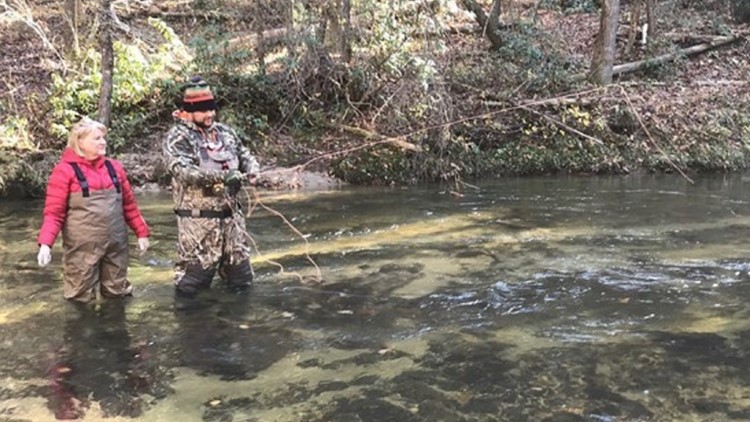PICKENS COUNTY, S.C. — A parasite-based disease already found in numerous states across America has found its way to South Carolina - and could impact fish numbers drastically.
While the discovery of Whirling Disease in South Carolina's trout populations hasn't yet shown some of the impacts it had elsewhere, the South Carolina Department of Natural Resources (SCDNR) is monitoring its presence.
The agency reports that the disease was first spotted in 1958 in the United States and has since been found in more than 20 states including North Carolina and Georgia. The disease, which is caused by a microscopic parasite called Myxobulus cerebralis, damages fish cartilage and skeletal tissue in trout, causing them to swim in a "whirling motion."
The disease can also cause 90 percent or greater mortality of young rainbow trout.
But, so far, those symptoms aren't appearing in any noticeable number among South Carolina's waters, officials said.
"While the pathogen is now documented in South Carolina, it is positive news that it has not been observed to cause the classic disease symptoms here or seen to cause observable population declines," SCDNR Chief of Freshwater Fisheries Ross Self said. "It appears rare that this pathogen manifests as full-on whirling disease in Southern Appalachian freestone streams like we have in South Carolina.”
An SCDNR map shows two spots in the area of Pickens and Greenville counties near the North Carolina border where fish have tested positive for the disease. Others north of the state line also tested positive for Whirling Disease.
However, the agency did say that a recent inspection of the Walhalla State Fish Hatchery in Oconee County tested negative for this and other pathogens.
The main goal now is not the elimination of the disease but to keep it from spreading - something fishermen and landowners can help with.
SCDNR urges them not to stock or move trout between bodies of water or release or dispose of them away from where they were caught
Anglers should also disinfect their waders and clean their equipment before leaving a fishing spot. Those moving from one spot to the other are also urged to use a 10 solution of chlorine bleach to clean their equipment. Otherwise, SCDNR says they should use different equipment entirely.



